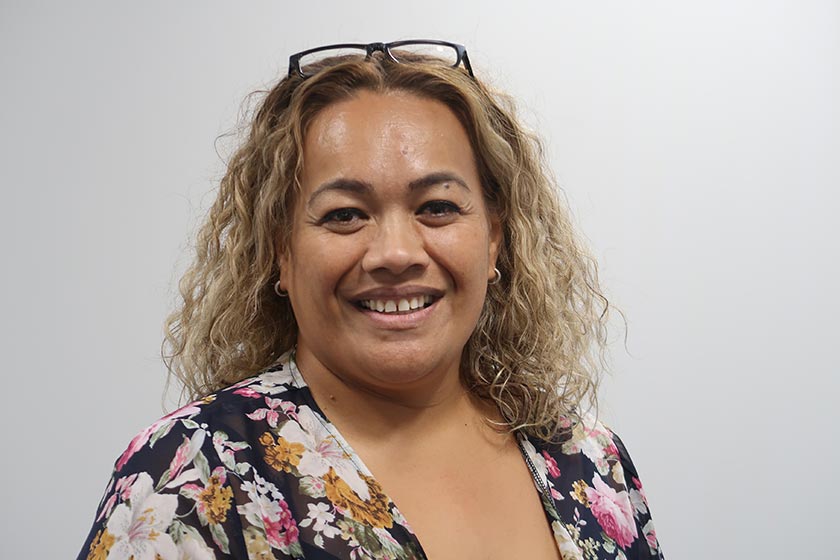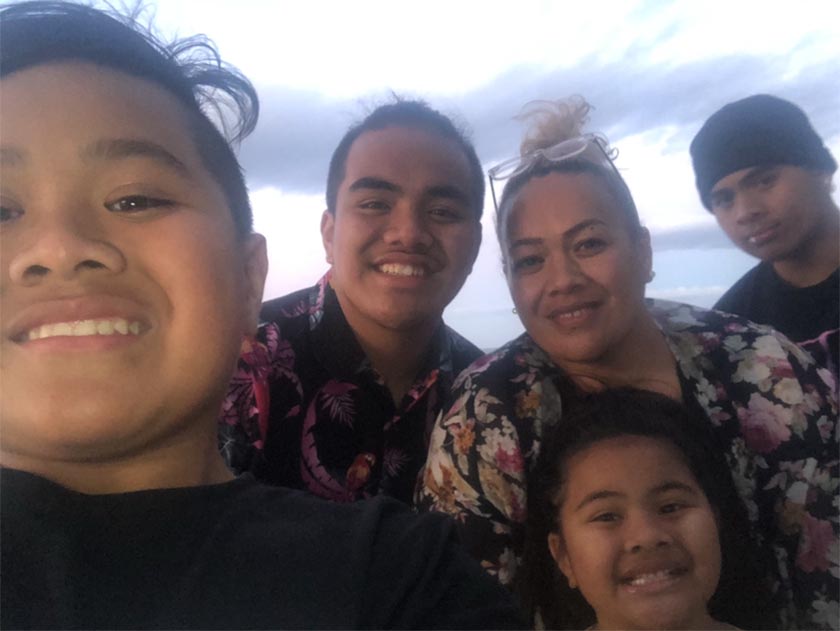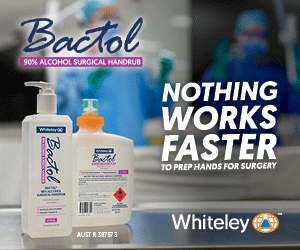
“O le ala I le pule, o le tautua – The pathway to leadership is through service.”
– Samoan proverb
February 22, 2011 – the day a 6.3 magnitude earthquake rocked Christchurch, killing 185 people – is a day embedded in the memory of many. For me, it was the day that catapulted me into becoming the person I am today. I am a New Zealand-born Samoan, educated as a registered nurse 25 years ago and now working as a nurse lecturer at Ara Institute of Canterbury.
At the time of the earthquake, I had been an acting service manager for a Pacific health clinic in Christchurch for just six months. I was the only manager onsite on that fateful day and the staff were looking to me for direction. I accounted for all the staff and led the team to Latimer Square.
Entrenched images
I will never forget the sounds of buildings crumbling, of car alarms, police, ambulance and fire engine sirens, helicopters with their monsoon buckets, of people crying, wailing, screaming and the indescribable smell. Those images are entrenched in my memory to this day.
I saw my home church, St Paul’s Trinity Pacific Presbyterian Church on the corner of Cashel and Madras Sts crumble and fall. It was a place where a lifetime of family memories had been created, my second home.
Like many of the clinic staff, I wanted to go home and find my three sons. But I decided to return to the clinic with two other staff members to retrieve medical supplies. After an unsuccessful attempt, we returned with a fireman, who used his axe to break into the medication room – we couldn’t open the door as the roof had caved in. Looking back, I realise it was not a good idea, but at the time medical supplies were needed and we could get them.
I concentrated on assisting where I could. I remember the moment I turned around and saw a temporary triage centre had been set up by Red Cross. This relieved us of our duties. Staff were traumatised by what was happening and we were advised to go home.
Within a few days of the earthquake, I had contacted leaders of the former Partnership Health Canterbury and Pegasus Health – since amalgamated – to see if I could get our practice staff temporary space at the 24-hour surgery, so we could continue to provide health care to our Pacific population. We had done this after the September 2010 quake. However, due to the extent of the devastation, this was not possible. Instead, I was asked to assist in the incident control room at Pegasus Health. This involved supporting medical practices to get running again, arranging for engineers to inspect practice properties for safety, checking practices had power or generators, arranging portaloos and water, and supporting staff of the practices that were able to re-open.
Leadership in a crisis
Over those few days, I watched impressive leaders scope, plan and implement support for primary health in Canterbury. I quickly learnt and absorbed strategies I would soon use. I saw them provide leadership in a crisis situation and admired how they communicated messages internally and externally, and their gratitude for the team around them. I saw their complex problem-solving/decision-making skills and their ability to delegate and manage the huge and complex workload, and they were transparent in their work. These leaders gave me the confidence to believe I was capable of working under extreme pressure in the environment and they supported me.
We were fortunate to be given two consulting rooms and the use of resources at a medical centre in south Christchurch. We had to be creative due to the confined space – the health clinic’s telephone calls were diverted to a mobile phone, the medical receptionist was based in the dining room of my home, and our patients saw our doctor and nurse at the practice. Staff relied on the generosity of practice staff in our temporary location. Fortunately, we were able to quickly re-engage with our Pacific patients as we had access to electronic patient files.
During this time, two of our GPs resigned and left Christchurch and our practice nurse took much-needed extended leave. Workforce retention became a challenge but, fortunately, we had the support of Pasifika Medical Association. The association sponsored travel and accommodation for a few Auckland GPs, who volunteered to work in our clinic temporarily.
Weeks passed, Christchurch was still in a state of emergency and we could not re-enter our health clinic as it was in the Red Zone. As the weeks rolled on, the pressure to find alternative premises grew. Pacific people rarely go to the doctor alone – they often taken the whole family. For me, this is normal. However, outside our environment, it became apparent this was not everybody’s view. This cultural conflict was part of the reason we were asked to leave the practice. A staff member graciously offered his home for the health clinic to use. I was then faced with the challenge of converting a four-bedroom house into a GP clinic within five days and purchasing all the equipment needed.
It soon became apparent our Pacific people were not seeking help. Our community staff were reporting that several Pacific families had fled their homes and a few houses appeared abandoned. This situation reflected the findings of a report released a few years earlier, Te Rau Hinengaro, which indicated Pacific people tended to internalise trauma.1 We decided to seek help from the former clinical director of Pacific Health in the Ministry of Health, Dr Api Talemaitoga.
Within a few days, key Pacific health leaders met at my home and developed the Outreach Project. Its aim was to get a snapshot of the immediate needs of Pacific people in Christchurch. An assessment tool, together with a staff training package, were developed. Patient data was retrieved from our database and sorted according to ethnicity and location. We then sectioned the city into zones. Our 17 community staff, who were being deployed into unknown situations, had also experienced trauma. Staff training, led by health consultant Fuimaono Karl Pulotu-Endemann, was an emotional and therapeutic experience for all.
Daily debriefs were set up to support staff with what they were encountering in the community. We encouraged them to reflect on and talk about what they were facing.
So taking courage within a cultural context required me to be courageous, which I define as ‘doing it scared’.
Information from the Earthquake Commission and Civil Defence and community notices about water, road access, food parcels etc, were also provided at these debriefs. The team members took these out to families and, where needed, interpreted them in the relevant Pacific language.
The lounge of the health clinic’s temporary home became the control room – the heart of the project. Other Pacific providers came on board and we worked collaboratively to support the Pacific community with additional resources, food parcels, referrals to social supports, and with the financial, employment and housing needs that surfaced.
As part of the Outreach Project, we coordinated and delivered community workshops to specific ethnic groups. These workshops were delivered in different Pacific languages and staff were given additional training to be able to facilitate these workshops in their respective language. The workshops increased the reach of the project significantly, with assessments conducted in groups and opportunistic screenings to help families access flu vaccines and health checks, which in some cases led to urgent medical referrals.
The needs that came to surface during these assessments were immense – overcrowded living conditions, with up to 30 people in a three-bedroom house; families still living in cars more than a month after the earthquake; parents petrified to send their children back to school; families continuing to live in dangerous houses; loss of income and/or employment; and so much more.
Overwhelmed by these needs, the Outreach Project gathered the data and used it as evidence for an increase in capacity and funding to provide earthquake response services. As a result, project staff saw close to 40 per cent of the total Pacific population in Christchurch at least once during this time.
The success of the Outreach Project, together with continued delivery of clinic services, was due to the leadership that arose within the organisation. The project enabled leadership from different ethnicities to come to the fore and enabled us to support leadership growth from within the community.
Many people offered their services and the efficiencies gained were entirely due to staff’s personal, team and organisational commitment and dedication to the Pacific community. The staff also endured high emotional stress during this time.
On the first anniversary of the earthquake, I was honoured with the Christchurch City Council’s Earthquake Award for Heroism. I remember thinking then, and still do, that I did not deserve the award alone. So many people gave so much to serve the most vulnerable communities during a devastating time. This Samoan proverb expresses my feelings: “O le tele o sulu e maua ai figota, e mama se avega pe a ta amo fa’atasi – My strength does not come from me alone but from many.”
As I reflect on that day, and the times that followed, I realise how much I was changed by those experiences. Being catapulted into a leadership role gave me the confidence to make decisions quickly and take responsibility for them. At the time the chief executive (CE) of our organisation was overseas and told me to wait for him to get back. However, I couldn’t just sit back, I had to help. Former Partnership Health Canterbury CE Jane Cartwright got me involved in all that had to be done and encouraged me, as did Pegasus Health CE Vince Barry.
My organisational skills were developed within a close-knit but large extended family.
I knew I had leadership ability and had quietly refined my skills in the background, but having to step forward and lead from the front was something I always struggled with. I have always led from the back, which I believe has a lot to do with my cultural background as a Samoan, being young (at the time), being New Zealand-born and also being a woman. So taking courage within a cultural context required me to be courageous, which I define as “doing it scared”.
My organisational skills were developed within a close-knit but large extended family. As one of the older ones, I coordinated large events and did a lot of trouble shooting. So dealing with complex or crisis situations was not new to me. And, as nurses, we know that managing direct care or service delivery is very much about organisational skills. I have always been strategic, having an overview of situations. However, over the years leading up to the earthquake, I had focused on refining my attention to detail.
Skills used in subsequent roles
I have been able to use the leadership skills I developed as a result of my experiences post-earthquake in subsequent roles. I left the Pacific provider in 2012, as it was going in a direction which did not fit with my values. I taught at the former Christchurch Polytechnic Institute of Technology a year and at the end of 2013 I moved with my family to Brisbane.
There I worked in primary health funding and was promoted into several positions from clinical coordinator to mental health programmes coordinator. This was initially a clinical governance role for the organisation but after national mental health reforms in 2015, I moved into a role as overall contractual programme coordinator. In this role, I also had the opportunity to advocate for Pacific research and programmes in the greater metropolitan region of South Brisbane.
I was able to confidently use the skills I had acquired or that had been brought to the fore in the aftermath of the earthquake.
Further study
I returned to New Zealand in January last year with my 4 children to complete my studies. I received a full scholarship from the Aniva Masters Programme and am hoping to finish my masters in professional practice (Pacific health) this year. Hopefully, I will then begin a doctorate.

As a nurse lecturer at Ara, I also have the portfolio of Pacific academic leader to support our Pacific bachelor of nursing (BN) students. Many of our students drop out in the first and second years and I am exploring ways of ensuring they are supported to complete their BN.
As I reflect on my career, I realise I stand on the shoulders of giants who have enabled and encouraged me to stand as a leader. I would like to acknowledge my parents, Taula Fegauia’i and Apaau Taula. I would also like to acknowledge my amentors, Fuimaono Karl Pulotu Endemann, who supervised, counselled and guided me through every step, and Jane Cartwright, who has always provided me with opportunities to excel.
I also want to acknowledge the Pacific community in Christchurch, Pacific organisations, community leaders, funders, past colleagues, my family and friends. All have contributed in different way to making me the nurse and leader I am today.
Genevieve (Taula) Togiaso, RN, PGCert (Pacific nursing), PGDipHSc (nursing), is a nurse lecturer and Pacific academic leader at Ara Institute of Canterbury.
Reference
- Wells, J. E., Oakley-Browne, M. A., Scott, K. M., Megee, M. A., & Joannd Baxter, J. K. (2006). Te Rau Hinengaro: The New Zealand Mental Health Survey: overview of methods and findings. Australian and New Zealand Journal of Psychiatry, (40)10, 835-844.






